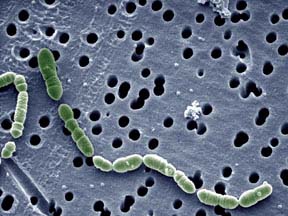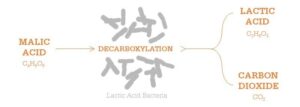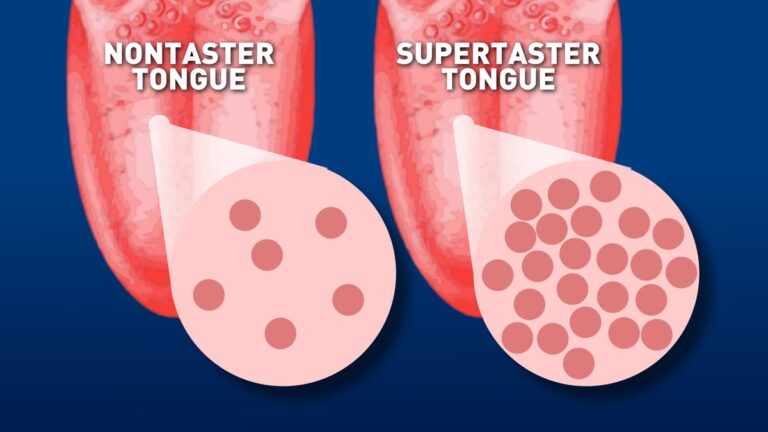If you follow me or this blog, you know I talk about fermentation a lot. I absolutely love the science behind it. The fact that microscopic organisms are responsible for creating alcohol that we enjoy consuming is just so cool to me! I mean, we eat sugar, but we don’t create a byproduct of alcohol, why do these little guys do that? Not to mention the evolution that a single celled organism has gone through, yet still remains a single cell. These single celled fungus have adapted to the higher alcohol levels in wine and have evolved to survive them. Science – you have to love it! Well, at least I think so.

But today we are going to be discussing a different type of fermentation. Malolactic fermentation. This is the process that is responsible for buttery flavor in those very famous Chardonnays, affectionately or non-affectionately known as butter bombs.
First off, malolactic fermentation does not occur in every wine. It can occur spontaneously or can be induced by the winemaker. It happens after alcoholic fermentation occurs and is performed by a bacteria, not a yeast. (remember, yeast is a fungus) The microorganism responsible for malolactic fermentation, also known as just “malo” or “ML” is a lactic acid bacteria, Oenococcus oeni. And technically, it isn’t fermentation, because fermentation by definition, is the process that yeast go through, not bacteria.

In the process of ML, the lactobacilli bacteria consume malic acid present in the wine and the by-products are lactic acid, carbon dioxide and diacetyl. It is this diacetyl that is responsible for the butteriness in the wine. In lower increments, it produces a nuttiness in the wine.

The malic acid, along with tartaric acid are naturally present in grapes. (pretty much all berries) Malic acid is involved in several processes which are crucial for the health of the vine. Different varietals have different amounts of naturally occurring malic acid. Additionally, cooler climate grapes will contain higher levels. Malic acid is at its highest just prior to veraison, As the berries approach full ripeness, the tartaric acids remain constant, but the malic acids decrease and can cause issues with the wine’s balance.
Have you been missing the weekly Exploring the Wine Glass posts? They have moved. Sign up below to receive notification of new posts. Subscribe to Dracaena Wines’ blog in the sidebar on this page.
The presence of malic acid in the wine can lead to an acid harshness or an unripe green flavor. This may be viewed, by the winemaker as less than desirable, so they will force malolactic fermentation. The other concern about having malic acid present in the wine is that it may undergo ML spontaneously after being bottled. This would lead to an unintentionally cloudy wine, even one with a bit of fizz to it (and not the good bubbles!)
~Slàinte!
Please follow us on Instagram, Twitter, Facebook and Youtube.
Dracaena Wines has received consistent 90+ ratings and multiple Double Gold medals. Click image to order yours today and let Dracaena Wines Turn Your Moments into Great Memories!



